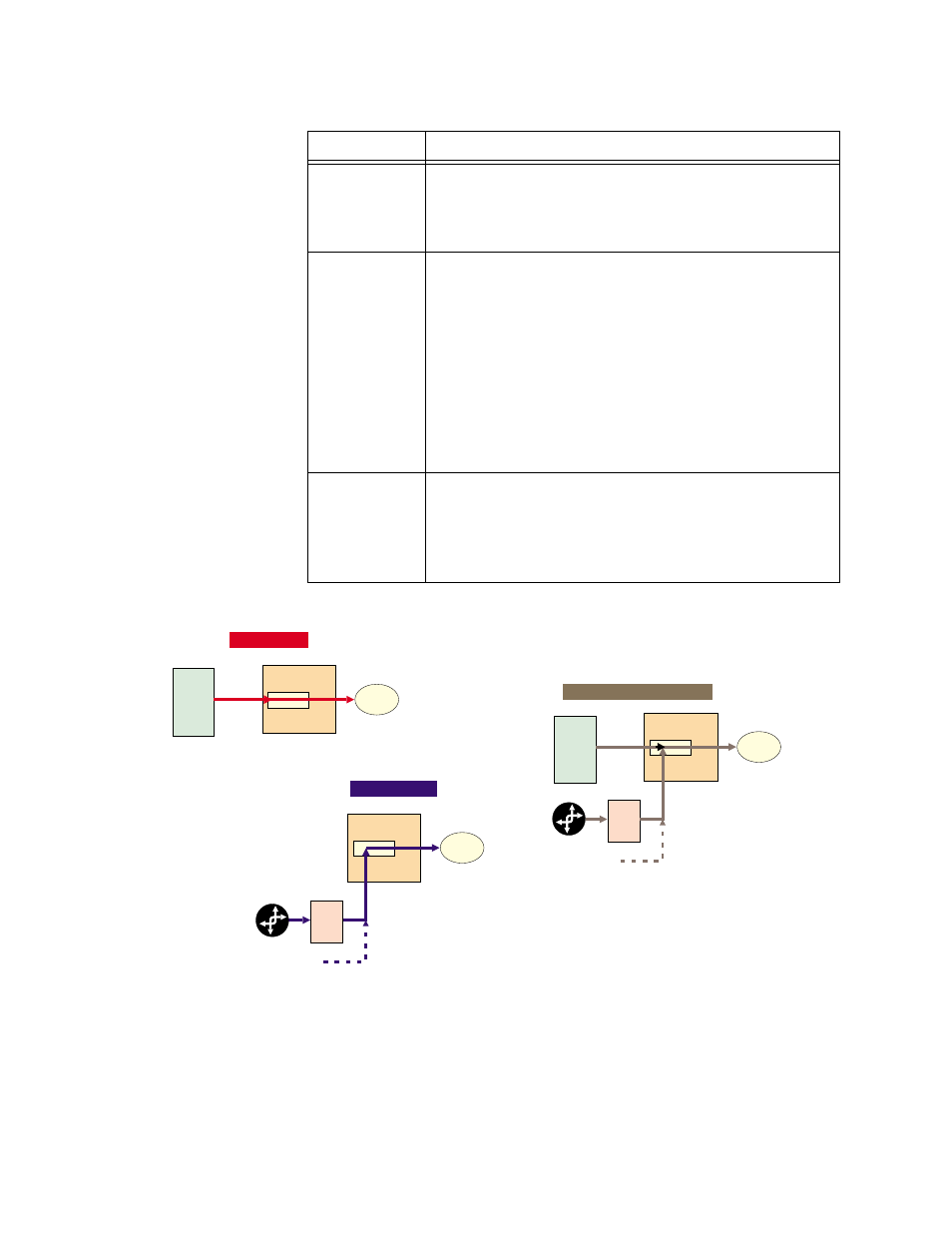Data service unit (dsu) modules -6, Table 2-1, Figure 2-4 – Verilink AS2000: The Basics (880-502981-001) Product Manual User Manual
Page 22: Data service unit (dsu) modules

System Information
2-6
Verilink Access System 2000: The Basics
Table 2-1 CSU Operating Modes
Figure 2-4 CSU Modes
Data Service Unit
(DSU) Modules
Data Service Units (DSUs) convert synchronous serial data to a
standard network format signal. When accessing a T1/E1 line, a
CSU is required. Newer technologies such as DS3 include CSU and
DSU functions but are called DSUs. Verilink DSUs are often referred
to as Data Interface Units (DIUs).
Mode
Definition
CSU Mode
The CSU connects directly to Level 1 equipment. It
ensures the channel carrier signals meet network
standards before passing the signals to the
network port.
MUX Mode
In MUX mode, the CSU connects to a DSU, or
includes an integrated DSU. The DSU converts
synchronous serial data to a channel carrier signal.
Some DSUs are dual port and can receive data from
multiple sources. The information from these
ports is multiplexed into Level 0 channels and
transmitted to the CSU. The CSU multiplexes data
from one or more DSU ports, up to the maximum
number of Level 0 channels (T1 = 24, E1 = 31). The
CSU transmits all-ones in any unused Level 0
channel to keep the Level 1 channel in service.
Drop and
Insert Mode
The CSU multiplexes information from Level 1
equipment and DTE (insert), enabling digital voice,
data, and video applications to share the same
T1/E1. At the far end, the channels are redirected
to either the Level 1 equipment or DTE (drop).
Level 1
Equipment
CSU
CSU Mode
Drop & Insert Mode
MUX Mode
Level 1
Equipment
CSU
MUX
DSU
NSP
NSP
Additional Data
Equipment
Drop and Insert Mode
CSU
MUX
DSU
Additional Data
Equipment
NSP
